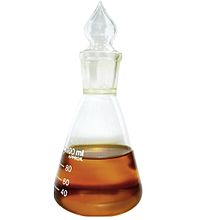
Bioactive adrenomedullin a prognostic biomarker in patients with mild to moderate dyspnea at the emergency department: an observational study
Sign Up to like & getrecommendations! Published in 2021 at "Internal and Emergency Medicine"
DOI: 10.1007/s11739-021-02776-y
Abstract: Acute dyspnea with underlying congestion is a leading cause of emergency department (ED) visits with high rates of hospitalization. Adrenomedullin is a vasoactive neuropeptide hormone secreted by the endothelium that mediates vasodilation and maintains vascular… read more here.
Keywords: dyspnea; study; emergency department; emergency ... See more keywords

Bioactive adrenomedullin in sepsis patients in the emergency department is associated with mortality, organ failure and admission to intensive care
Sign Up to like & getrecommendations! Published in 2022 at "PLoS ONE"
DOI: 10.1371/journal.pone.0267497
Abstract: Background Adrenomedullin is a vasoactive hormone with potentially prognostic and therapeutic value, which mainly has been investigated in intensive care unit (ICU) settings. The triaging in the emergency department (ED) of patients to the right… read more here.
Keywords: mortality; sepsis patients; bio adm;

Proenkephalin A and bioactive adrenomedullin are useful for risk prognostication in cardiac surgery
Sign Up to like & getrecommendations! Published in 2023 at "Frontiers in Cardiovascular Medicine"
DOI: 10.3389/fcvm.2022.1017867
Abstract: Introduction Various clinical scores have been developed to predict organ dysfunction and mortality in patients undergoing cardiac surgery, but outcome prediction may be inaccurate for some patient groups. Proenkephalin A (penKid) and bioactive adrenomedullin (bio-ADM)… read more here.
Keywords: penkid; surgery; cardiac surgery; bio adm ... See more keywords

30 Days Mortality Prognostic Value of POCT Bio-Adrenomedullin and Proenkephalin in Patients with Sepsis in the Emergency Department
Sign Up to like & getrecommendations! Published in 2022 at "Medicina"
DOI: 10.3390/medicina58121786
Abstract: Background and Objective: Sepsis is a worldwide severe disease with a high incidence and mortality rate. Sepsis is a frequent cause of admission to the emergency department (ED). Although prognostic scores (Sequential Organ Failure Assessment,… read more here.
Keywords: sepsis; bio adm; emergency department; mortality ... See more keywords

Utility of Measuring Circulating Bio-Adrenomedullin and Proenkephalin for 30-Day Mortality Risk Prediction in Patients with COVID-19 and Non-COVID-19 Interstitial Pneumonia in the Emergency Department
Sign Up to like & getrecommendations! Published in 2022 at "Medicina"
DOI: 10.3390/medicina58121852
Abstract: Background and Objectives: In order to accelerate the risk stratification of patients referred to the Emergency Department (ED) with interstitial pneumonia, it could be useful to provide new and effective laboratory tests for use. The… read more here.
Keywords: day; bio adm; mortality; interstitial pneumonia ... See more keywords

Prognostic Value for Mortality of Plasma Bioactive Adrenomedullin in Patients with Pulmonary Arterial Hypertension: A Sub Analysis of the Biomarker Study in the COHARD-PH Registry
Sign Up to like & getrecommendations! Published in 2023 at "Medicina"
DOI: 10.3390/medicina59040748
Abstract: The adrenomedullin level increases in pulmonary arterial hypertension (PAH, and correlates with a high mortality rate. Its active form, bioactive adrenomedullin (bio-ADM), has been recently developed and has significant prognostic applications in acute clinical settings.… read more here.
Keywords: asd pah; hypertension; bio adm; mortality ... See more keywords